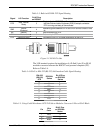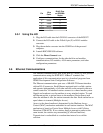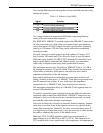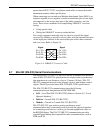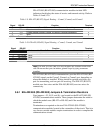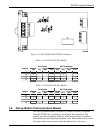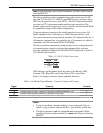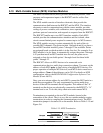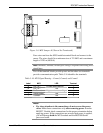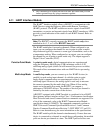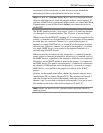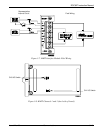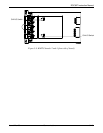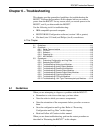
ROC827 Instruction Manual
Issued Mar-06 Communications 5-14
5.10 Multi-Variable Sensor (MVS) Interface Modules
The Multi-Variable Sensor (MVS) provides differential pressure, static
pressure, and temperature inputs to the ROC827 unit for orifice flow
calculation.
The MVS module consists of interface electronics that provide the
communications link between the ROC827 and the MVS. The interface
electronics controls communications with the sensor module, provides
scaling of process variables, aids calibration, stores operating parameters,
performs protocol conversion, and responds to requests from the ROC827.
The ROC827 handles up to two MVS interface modules. Each MVS
module provides the communications interface and the isolated, short-
circuit current-limited power required to connect up to six MVS sensors.
The MVS modules create six points automatically for each of the six
possible MVS channels. The points include 1 through 6 and if you have a
second MVS module installed, points 7 through 12 are available. Points
are assigned based on which module is in the first slot. For example, if an
MVS module is in slot three, it automatically assigns the points 1 through
6. If you then install an MVS module into slot one, the points are re-
assigned so that slot one holds points 1 through 6 and slot three holds
points 7 through 12.
The ROC827 allows six MVS devices to be connected on its
communications bus in a multi-drop connection scheme. You must set the
address of each MVS prior to final wiring of multiple MVS devices. For
proper operation of multiple MVS devices, each MVS device must have a
unique address. None of the addresses can be 240. For details on MVS
configuration, refer to the ROCLINK 800 Configuration Software User
Manual (Form A6121).
Once you set a unique address for each MVS, connect the MVS units in a
multi-drop arrangement. The only requirement for wiring multi-drop
devices is that all like terminals be tied together. This means all the “A”
terminals on the devices are electrically connected to the ROC827’s “A”
terminal and so on. To do this, daisy-chain wire each remote MVS.
Terminations are required on the two MVS modules located at the
extremities of the circuit. That is to say, the two outside modules require
terminations in order to complete the communications circuit. The MVS
termination jumper is located at J4 on the module. Refer to Table 5-15 and
Figure 5-6.
Table 5-15. MVS Termination
Terminated Not Terminated
Jumper
TER OUT TER OUT
J4 x x



